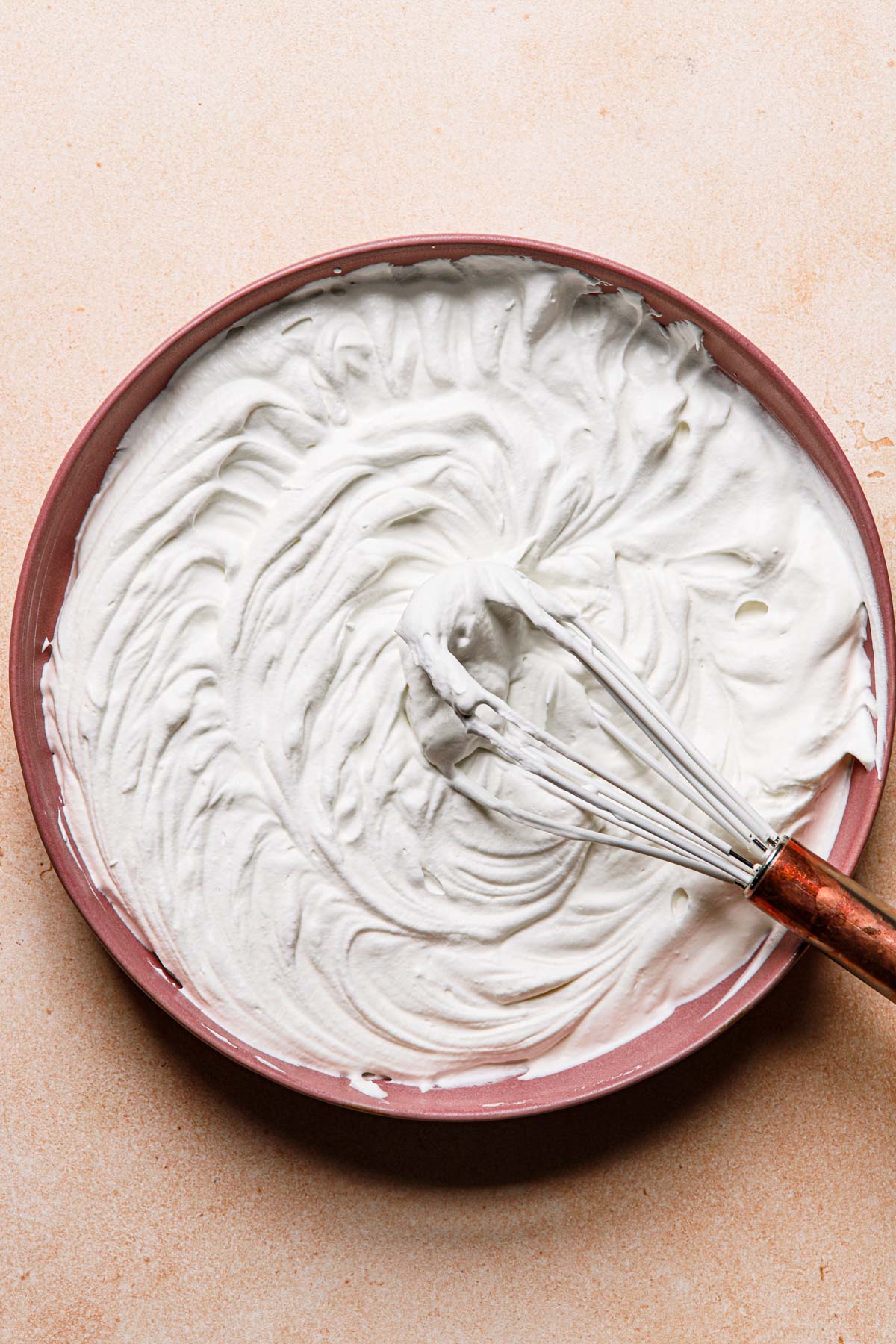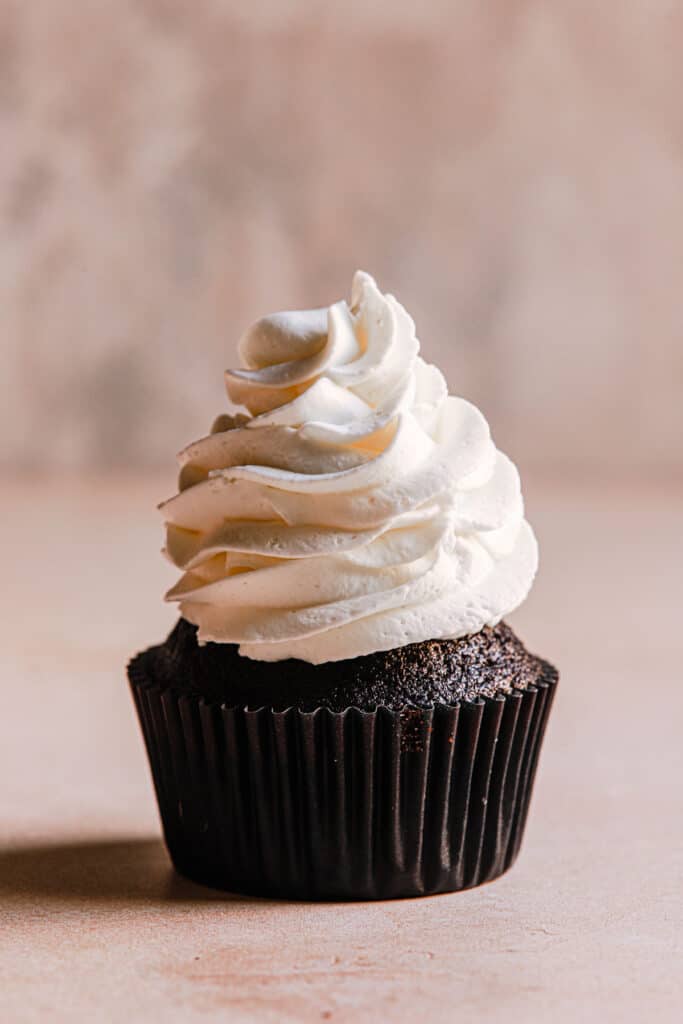Last updated on January 20th, 2024.
We’ve all been there, standing in front of the refrigerator door, scratching our heads and wondering “ How long does heavy cream last? “. Because the cream we bought a while back has been sitting in the back of our refrigerator shelf, right behind the OJ, and 5 bottles of flavored coffee creamers, waiting for us to finally bake the cake, we have been planning to for a while now.
Turns out we may have been overcomplicating things and here I have collected a few tips and tried to answer some of the questions to better understand how long is heavy cream good for.
Don’t forget to check out my posts about How to Stabilize Heavy Whipping Cream and What is Heavy Cream.
Please keep in mind that I am not a doctor or a food safety expert. See my Disclaimer.

How long does heavy whipping cream last, and what is heavy cream shelf life?
According to the FDA*heavy cream (or double cream) is a cream that contains no less than 36% milk fat. It can be pasteurized or ultra-pasteurized and be homogenized. It should be stored in the refrigerator at 40F or less, and most brands can last for up to 30 days unopened if ultra-pasteurized, handled properly, and seven days after opening. The best way of knowing whether it is fresh or safe is by tasting it, checking for the signs below, and following the manufacturer’s guidelines.
Download this Food Keeper brochure for more information about how to store your food such as sour cream, ricotta cheese, cream cheese, different types of cream, and heavy cream products. Or visit this FoodKeeper site.
It is unclear to tell when does the 30 days begin. After all your products did not show up in your fridge right after it was packaged. Best practice is to Look at the expiration date. All dairy products have an expiration date provided by their manufacturer, which varies since each has its own processing method. It is the best and most accurate estimation (assuming the products have been appropriately stored) for when the perishable dairy product might start to inhibit bacterial.
How to tell if heavy cream is bad?
Heavy cream has a high-fat content; sometimes you may wonder if heavy cream does go bad?. Well, it does. Learn to know if it is bad by paying attention to the following few signs. These are some of the signs that your cream has gone bad, and consuming it might cause stomach upsets and food poisoning.
The first thing I would like to point out is that an opened carton will lose its freshness faster than unopened cartons of heavy cream since it has been exposed to air and other bacteria. This is why it is even more important to watch for signs of spoilage.
- The cream has a strong sour smell.
- The cream has an unpleasant metallic taste.
- The container collected yellowish greener color at the corners.
- When you pour it, its texture is stringy and slimy, and it does not mix well with other liquids.
- Check the heavy whipping cream expiration date, and remember that every container has a different life span depending on where you store it, how crowded your fridge is, and what its temperature is.
- Vile taste is a great indicator.
- Sometimes even a brand-new carton can be bad. Remember, we don’t know exactly how it was stored from the moment it was packaged. So even when we take all measurements, we still end up with a bad batch.
*note that cream does not always tend to curdle the same way as milk does when spoils.
Tips to prolong the shelf life of heavy cream
It is important to understand that even if the heavy cream does not show any signs of spoilage, an old heavy cream will no longer be at its best quality. Be sure to read the various ways and tips below for an extended period and best results
- Food safety comes first. If in doubt, toss it out!!!
- Check the expiry date when shopping at your local grocery store. Make sure that it is at least 30 days ahead. (note that stores place the fresh containers at the back of the shelf, so don’t be shy and move the cartons around).
- Do not keep cream (or any other milk products) at room temperature for too long.
- Store your cream at the back of the fridge and not at the fridge door.
- Ensure your refrigerator’s temperature is not above 40F (5C).
- Keep the cream tightly sealed at all times (I find that the original package is the best option, even better than an airtight container).
- Use leftover heavy cream as soon as possible, below I listed a few ideas and recipes for future uses. It’s always a great idea to minimize food waste.
Recipes ideas
- Homemade ice cream like this Tahini Chocolate ice cream and this Caramelized banana ice cream.
- Chocolate ganache for filling and coating cakes and cupcakes
- Make chocolate whipped cream to fill some brioche donuts.
- Practice your stabilized heavy cream skills.
- Make thick cream sauces like this Gorgonzola cream sauce or creamy soups like this Crab bisque.
- Pour the cream into ice cube trays for your coffee or other drinks.
* In the United States, The United States Department of Agriculture’s Food Safety and Inspection Service (USDA) inspects only meat, poultry, and egg products. The United States Food and Drug Administration (FDA) inspects and regulates other foods.



Conclusions and a few last notes
To summon up our short discussion about the shelf life of heavy cream, here are some pointers and conclusions.
- Heavy cream has a higher fat content and is different from light cream and whole milk, so they each have a different shelf life length.
- Ultra-pasteurized cream has a longer shelf life but might not whip and stabilize as pasteurized.
- The expiration date is the manufacturer’s recommended date by which you should use the cream.
- Storage and handling make a difference and can reduce or prolong the shelf life of the cream.
- If spoiled heavy cream is consumed, it can cause foodborne illnesses such as E. coli.
FAQ
Up to 30 days, assuming it has been stored properly.
Up 30 days, assuming it has been stored properly.
Yes. See above for signs.
Up to 7 days, check the expiration date.
Cream is different from heavy cream, best to check the expiration date.
See above tips and signs.
Up 30 days, assuming it has been stored properly. Best practice is to check before consuming.
Stay Curious and Happy Baking!!!


Had some whipping cream and checked it out after being away for two weeks since I opened it. I kept it in the back of the properly cooled fridge, tasted a spoonful and seems fine. Wonder why it says to use within seven days of opening? Maybe it’s being on the conservative side for those that might keep it in the fridge door.
Hi Victoria,
I think you are correct; the manufacturer can not guarantee what safety measures their customers may or may not take. The temperature of the refrigerator, the location of storage, and the type of container they might use all make a huge difference. It is important always to check your dairy before use, mainly if not used for cooking.